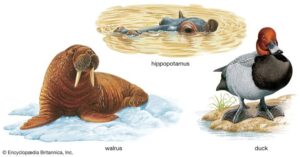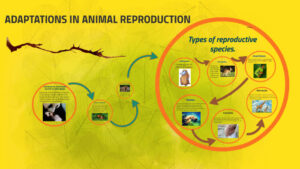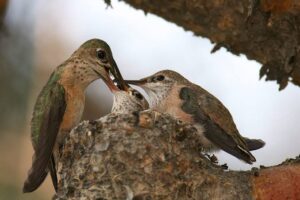Back to: ZOOLOGY 200 Level
I’m thrilled to continue this learning adventure with you. Today’s topic is all about reproduction and adaptation—two fundamental processes that help organisms survive, evolve, and thrive in the world. Understanding how these work will give you valuable insights into the diversity of life forms and the strategies they use to adapt to their environments.
Reproduction and adaptation
Reproduction in animals
Reproduction is the biological process through which organisms produce offspring, ensuring the continuation of their species. There are two main types of reproduction in animals: asexual and sexual.

- Asexual reproduction involves a single parent and results in offspring that are genetically identical to the parent. This is common in simple organisms like bacteria and some invertebrates. For example, hydra can reproduce through budding, where a new individual forms as an outgrowth from the parent’s body.
- Sexual reproduction involves two parents—typically one male and one female—who contribute genetic material to produce offspring. This process increases genetic diversity, which is essential for the survival of species in changing environments. Most animals, including humans, reproduce sexually. In animals like mammals, the male provides sperm, and the female provides eggs. Fertilisation occurs inside the female’s body (internal fertilisation), while in some species, like fish, fertilisation occurs outside the female’s body (external fertilisation).

Adaptation in animals
Adaptations are special characteristics or behaviours that allow an organism to survive and thrive in its environment. These can be structural, physiological, or behavioural adaptations.
- Structural adaptations are physical features of an organism’s body that help it survive. For example, the long neck of a giraffe allows it to reach high branches for food, while the webbed feet of a duck enable it to swim efficiently in water.
- Physiological adaptations are internal processes that help organisms survive. One classic example is the ability of some animals to hibernate during cold winter months. Bears, for example, enter a state of hibernation to conserve energy when food is scarce. Similarly, camels are well-adapted to life in the desert because their bodies can conserve water and regulate their temperature in extreme heat.
- Behavioural adaptations involve the ways animals behave to survive. Birds migrate to warmer regions during the winter to find food and better conditions for breeding. Some species of frogs can survive periods of drought by entering a state of dormancy until water returns.
Reproductive adaptations
In addition to general adaptations, many animals have unique reproductive adaptations that help them succeed in their environments. For example, the male seahorse has a special adaptation where it carries the female’s eggs in a pouch until they hatch, giving the offspring a safer and more stable environment to develop.

In some species, like the African elephant, females have a long gestation period (almost two years) to ensure their young are born large and strong enough to survive in the wild. Additionally, many species have evolved specific mating behaviours to increase their chances of successful reproduction, such as the elaborate courtship dances of birds of paradise.
Summary
Reproduction and adaptation are key to the survival of species. Animals reproduce either asexually or sexually, with sexual reproduction promoting genetic diversity. Adaptations can be structural, physiological, or behavioural, helping organisms survive and thrive in their environments. Some animals also have specific reproductive adaptations that enhance their chances of survival, such as internal fertilisation or extended gestation periods.
Evaluation
- What is the difference between asexual and sexual reproduction?
- Give two examples of structural adaptations in animals and explain their function.
- How do physiological adaptations help animals survive in extreme conditions?
- What is one example of a reproductive adaptation in animals?
You’ve just unlocked the secrets of how animals adapt and reproduce to thrive in their environments. Keep building on this knowledge—it’s the foundation for understanding the incredible diversity of life. I’m so proud of how far you’ve come! Stay curious, and let’s keep learning together with Afrilearn!
